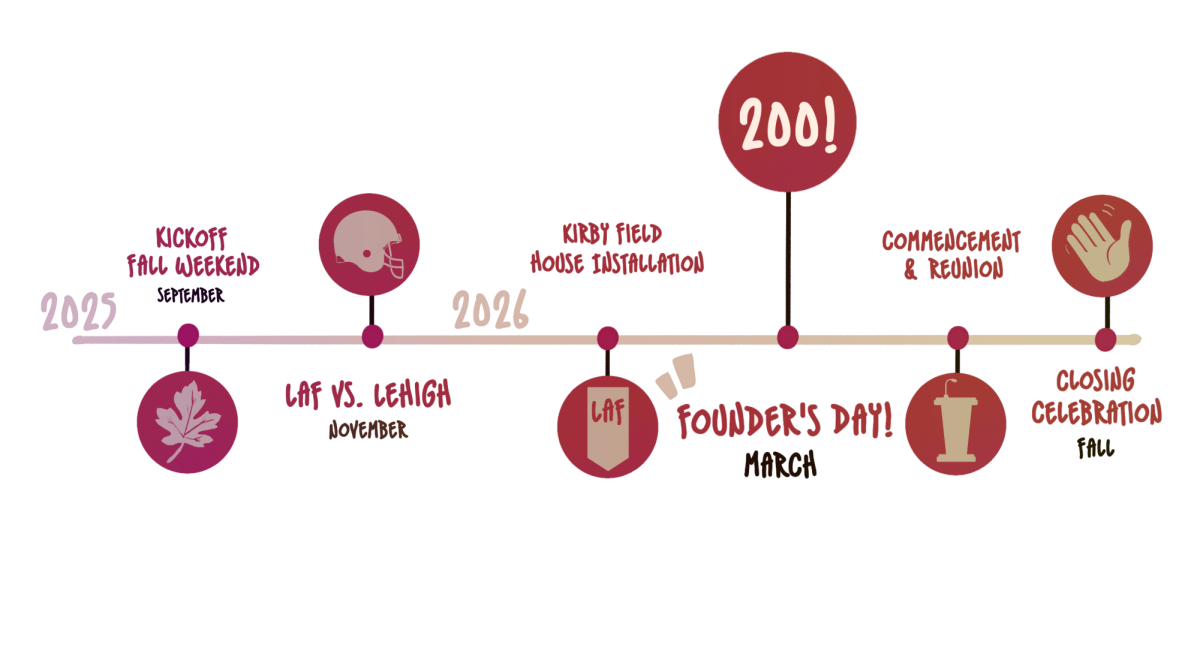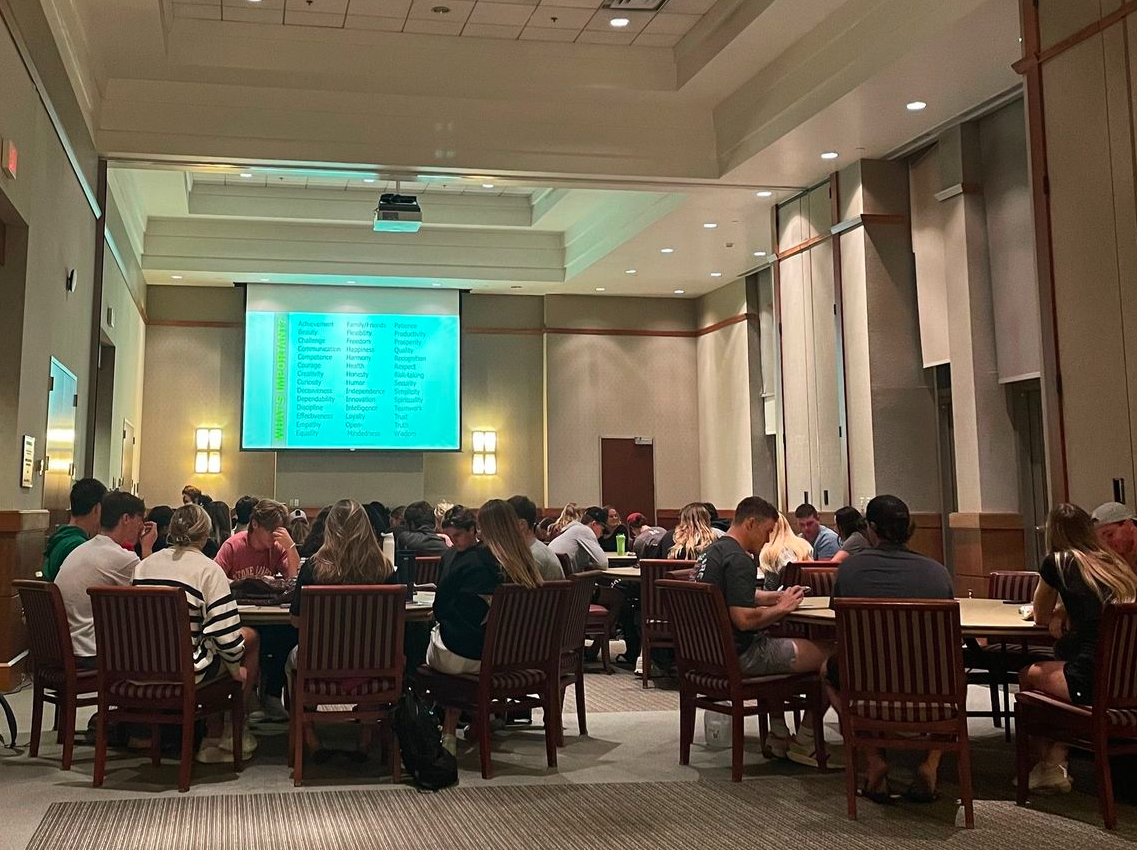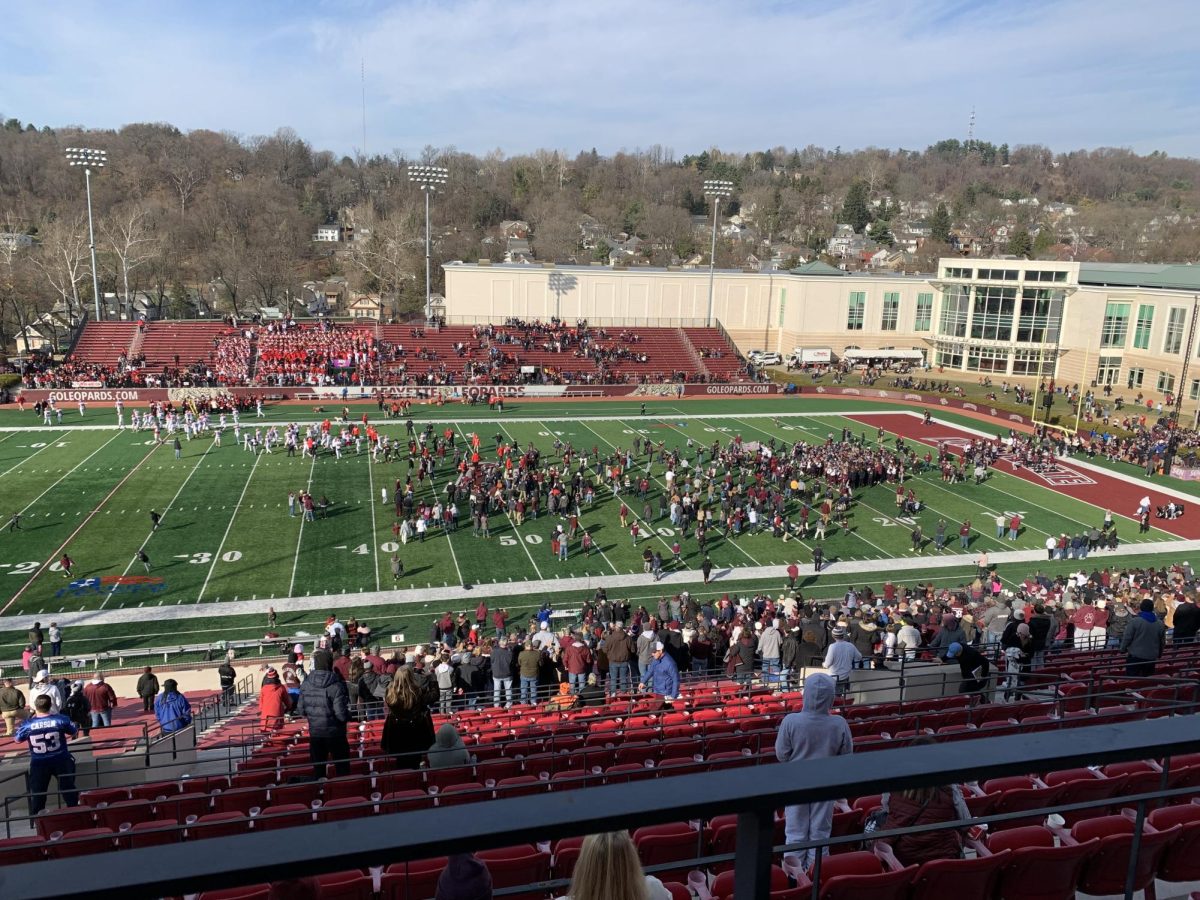By Stacey Goldberg ’12
Photos Courtesy of William Pope.L
You probably won’t see the film Reenactor nominated for best actor or best picture at the Oscars. But that’s okay. It’s not a commercial type of film. It’s a work of art, an experimental film. According to director Pope.L, the film that is now premiering in the Williams Center Gallery was intended to let students see something they aren’t used to seeing, to introduce them to a new way of experiencing images.
“I’m confused as well as intrigued,” said studio art major BenHerchenroether ‘12. Herchenroether has only seen twenty minutes of the roughly 200 minute film, which screened for 52 hours straight in the gallery from February 21 to 23. However, Herchenroether’sreview is not to be discounted because Pope.L did not intend for the film to be viewed in its entirely.
The director actually encouraged his audience to view his film and maybe even take a nap, an act that is encouraged by the gallery setup: a single room turned into a theater with couches (the white one being the comfiest) and pillows for the audience to lounge, lit only by the movie screen.
Pope.L was inspired to craft the venue in this way from his childhood experiences at theaters on 42nd Street in New York City. These theaters, which screened Oscar nominees, would be open 18 hours a day to an audience which was made up of “all types of people… prostitutes, drug addicts, businessmen who should be at work and just people who were there illicitly,” Pope.L said. “But they were all there pretending there was no time.”
Without time, Pope.L believes that we can measure our lives by these images; nothing exists between the film and the viewer.
Reenactor, though very much a film meant to be interpreted by the viewer, was directed with a traditional three-act structure. Pope.L, who received his masters in Visual Arts at Rutgers University and teaches Writing for Performance Art at the University of Chicago, has borrowed modus operandi from the pros, such as the MacGuffin, a prop technique popularized by Alfred Hitchcock to drive the storyline.
The storyline, however, is not easily identifiable. Black characters in confederate uniforms lead the viewer to believe there may be racial undertones, but when asked what certain symbols mean, such as that of the repeated image of Robert E. Lee, Pope.L’s response was often a personal anecdote, or retort: “What does it mean to you?”
He was open to student feedback as the film itself is not entirely completed. Indeed, it is being shown to Lafayette students as a “test run,” at least one more edit will be made before the film is completed.
In the lecture Pope.L gave on Feb 22, he identified the racial undertones of his work by highlighting his series of sketches that link art with “racialized language,” such as “yellow people are runny,” and “black people smell.”
To Pope.L, such “beautiful, elegant and ugly” phrases are direct, “x equals y,” he said, which is what makes them hurtful. “They are investments in very strong feelings.”
According to Art History major Briana Howard ‘14, putting the racially charged phrases into art was beneficial to Pope.L’s message. “I thought it was a new way of looking at slurs. He brought these anger fueled phrases to life and gave them a boundary so people could see what they were saying and somehow comprehend it,” she said.
According to Metzgar Professor of Art Robert Mattison, one of the greatest experiences with bringing Pope.L to campus is his interaction with the students. As the 2012 Richard A. and Rissa W. Grossman Artist-in-Residence, Pope.L has interacted with students from the college and in the local high school and community to tell them about his experience directing the film and his inspirations. “I don’t think there’s been anyone like Pope.L… He is a natural teacher. His ability to communicate with students, to get ideas out of them, share ideas, to reach an understanding about the work has been remarkable,” Mattison said.







































































































